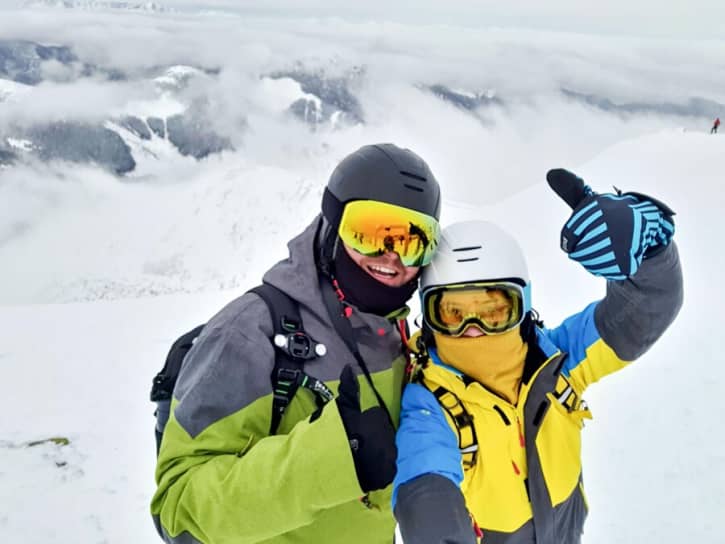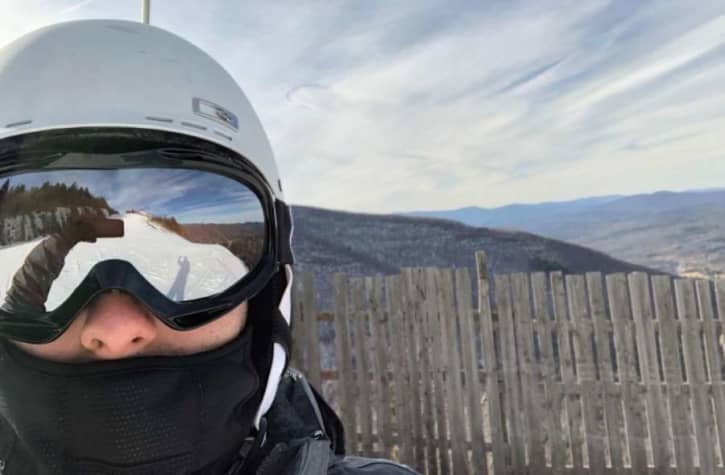Having cold hands can be one of the more annoying things when you're skiing. It's a real downer when you're trying to enjoy an awesome run and all you can think about are your frigid fingertips. But don't despair; there are plenty of things you can do.

Try these 15 tips and tricks on the slopes to keep your hands nice and toasty:
Contents
1. Put Gloves on Before Going Outside
This one might be a bit obvious, but you'd be surprised how many people put their gloves on after they step out of the lodge. If you step outside with bare hands, you can expect your blood vessels to tighten up immediately, leaving little opportunity for warm blood flow. At this point, it can be difficult to warm back up, even if you put your gloves on.
2. Check Tightness Around the Wrists
If you're skiing with poles, you want to be careful that your wrist wraps aren't too tight. The constriction around your wrists could be cutting off blood circulation to your hand. You can also consider skiing without the wrist wraps on.
On the same note, be sure that other parts of your gear aren't too tight on the wrists. If your gloves or jacket has tightening or Velcro mechanisms, pay extra attention to them.
3. Make Sure Snow Can’t Get In
When you've got all your gear on, make sure that there is no open space between where your gloves end and the sleeves of your jacket begins. It may not be obvious at first, but as you move and shift around, you might notice that some areas are exposed.
The best way to keep things completely covered is to make sure your gloves are long enough to fit over the sleeves of your jacket. If the outside of your gloves is inside your jacket sleeves, you're more than likely going to find that powder can blow in, making its way to your hands and the rest of your body.
4. Use Liner Gloves
Having liner gloves to wear under your shell layer is massively important. Aside from providing some additional insulation, they serve three other critical functions:
- A good pair will help wick moisture away from your hands. Wet hands are cold hands, and you don't want the sweat generated from an intense run to freeze up on you.
- In the event you temporarily remove your outer gloves, liner gloves will keep you warm while giving you the dexterity to do certain tasks.
- You can use them by themselves on days when it's not cold enough to warrant heavier gloves.
I personally use Storm Liners by Dakine which I did a full review of here.
5. Try to Not Take the Gloves Off
If you have to make an adjustment to another piece of your gear, try to do it without taking your gloves off. At first, it will seem difficult, but eventually you can develop enough dexterity with gloves or mittens to make the common adjustments to your goggles or face equipment.
Practice makes perfect!
6. Store Gloves Near Your Core When Not In Use
If you do have to take your gloves off, the most obvious options are to let them dangle from your wrists or stuff them into your outer pockets. Try not to do either of these.
The better option is to store them as close to your core as possible, possibly in the pockets of your mid layer. There's nothing worse than putting cold hands into cold gloves. Leverage the warmth of the rest of your body.
7. Eat Citrus
You've probably haven't seen this trick anywhere else, but according to science, it really works.
Citrus contains a phytonutrient called hesperitin which is responsible for an increase in blood flow. Believe it or not, this has actually been studied using a laser that measures temperature named a Doppler fluximeter.
Researchers measured the actual effectiveness by exposing study participants to cold rooms or even icy water. They gave some people orange Kool-aid and other people a drink that actually contains hesperitin. Those people who got the real deal had better blood flow and stayed warmer.
Try eating a few oranges before you go out on the slopes, and be sure to let us know in the comments if you notice a difference.
8. Ensure Your Outer Gloves Are Waterproof
Don't make the mistake of getting shell gloves that aren't fully water-proof. Don't settle for water resistant. If you get water inside your gloves, it's going to be really difficult to fully dry them out without going inside.
Additionally, your gloves should be breathable so that they don't harbor moisture from sweat or cause you to overheat.
9. Try Hand Warmers
If you're in a pinch, one-time-use hand warmers can come in handy and are usually pretty cheap. Most brands will last around 8-10 hours, more than enough to give you that extra boost of warmth for the entire time on the mountain.
10. Consider Mittens Over Gloves
Gloves are great, but mittens are better. Mittens keep your fingers together which means that there's less surface area for heat to dissipate.
11. Don’t Hold The Poles Too Tight
Many first time skiers will be a bit nervous which results in extremely tight gripping and squeezing on their poles. If you make a tight fist for long enough, your fingers turn white from lack of circulation. Take a deep breath, relax, and loosen up on the grips.
12. Stay Moving
When you're skiing or snowboarding, there's always a fair bit of downtime. Try not to remain static for too long when you're waiting for your friends or the next lift to come by. You don't have to get crazy, but shaking your hands, waving your warms, or doing some mini squats can go a long way to making sure you don't completely cool down between runs.
13. Avoid Alcohol
Many ski lodges are readily equipped with alcoholic beverages to sip between runs. You're keen to save the drinking for after, not only to avoid crashing and falling, but for warmth as well.
The thing about alcohol is that it can actually make you feel a bit warmer, but in a misleading way. Alcohol actually dilates the blood vessels, which will force your blood to move from your core to the surface of your skin. This throws off your body's natural processes for regulating your body temperature.
Because the surface of your skin is now too warm, you may even begin to perspire, dehydrate, and cool off even more. This can cause your organs and the rest of your body to be even colder, which you might be too drunk to notice.
Rather than consuming alcohol, eating citrus as discussed earlier is going to be the safer bet.
14. Don’t Smoke
If you're a smoker, it may be tempting to light a cigarette on the lift, but it's only going to make you colder. In the short term, your blood vessels become constricted on each inhale, which will in turn make your feet and hands colder. In the long term, smoking is going to harden and thicken your arteries, making the problem of poor circulation even worse.
15. Keep the Rest of Your Body Warm
If the rest of your body isn't warm, specifically your core, you're already fighting a losing battle. Not only will your body need to take blood away from your extremities to protect its vital functions, but you're also putting yourself at risk for hypothermia.
Want to know how to keep everything else warm?
Check out all the gear that I use on the slopes.






